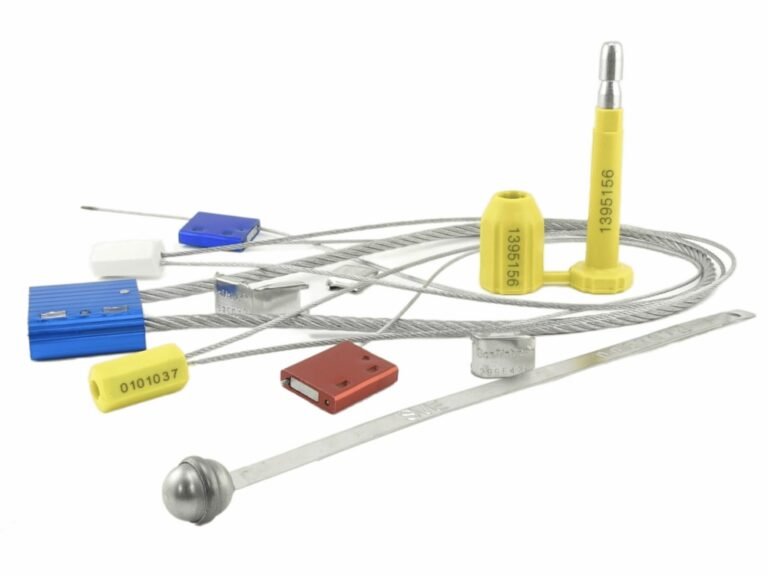The last article said before removing a seal you must check, so removing a bolt seal also needs safe operation procedures. Removing a bolt seal seems simple, but one wrong move can send shrapnel flying. This turns a routine task into a serious safety hazard for you and your team.
Safe bolt seal removal requires proper Personal Protective Equipment (PPE), specifically safety glasses and gloves, and the correct tool—a pair of long-handled bolt cutters. Using a clear, stable cutting technique that directs force away from the body is essential to prevent injury.
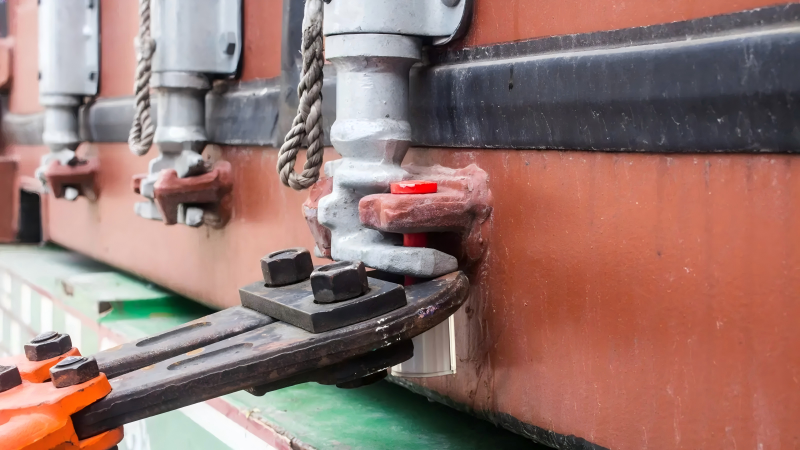
In my experience, the biggest mistakes happen when people see this task as simply "breaking" the seal. This is the wrong mindset. You are not destroying a lock; you are executing the final, designed step of a security device's life—its controlled failure. A high-security bolt seal is engineered to resist brute force. Therefore, its removal must be a precise, predictable procedure. Your job is to trigger its designed failure point safely and efficiently. This guide will show you how to perform that procedure like a professional, ensuring the safety of everyone on the loading dock.
Essential PPE: Your First Line of Defense Against Injury?
Think you can skip the goggles just this once? A tiny metal fragment traveling at high speed can cause permanent eye damage. It’s a risk that is never worth taking.
Your essential PPE for removing bolt seals includes impact-resistant safety glasses (or goggles for full coverage) and heavy-duty work gloves. This equipment is your only defense against flying metal chips and sharp, freshly cut steel edges.
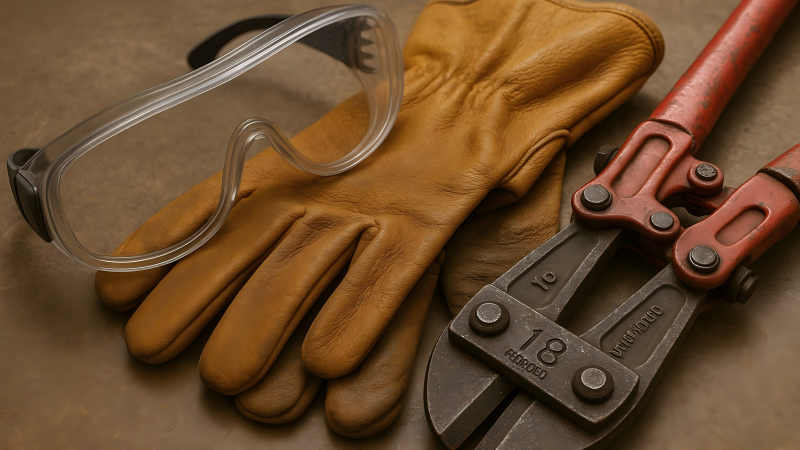
A bolt seal is made of hardened steel for a reason. When it breaks, it releases stored energy. This isn't a gentle snap; it's a sudden fracture that can easily send a small piece of metal flying at over 70 miles per hour. Thinking about personal protective equipment (PPE) as a non-negotiable first step is critical. According to safety bodies like OSHA, providing and using correct PPE is fundamental to workplace safety.
Eye Protection: A Hard Requirement
Standard eyeglasses are not enough. You need ANSI Z87.1-rated safety glasses at a minimum. These are designed to withstand high-velocity impacts. For maximum protection, goggles that form a seal around your eyes are even better, as they protect from fragments coming from any angle.
Hand Protection: Preventing Lacerations
Once cut, the two pieces of the bolt seal will have extremely sharp edges. Heavy-duty leather or composite material work gloves protect your hands from deep cuts when you handle and dispose of the removed seal pieces.
Selecting the Right Tool: Why Bolt Cutters Are Non-Negotiable?
Grabbing a grinder a hammer seems tempting for a tough seal. But these tools create uncontrolled breaks, increasing the risk of injury and even damaging the container or its contents.
Bolt cutters are the only acceptable tool because they apply a massive, focused shearing force. This creates a clean, predictable cut, which minimizes the violent release of energy that causes metal to fly.
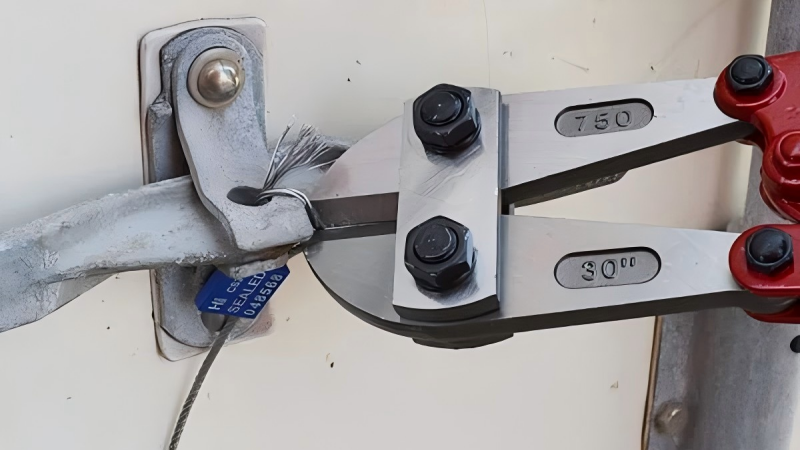
The choice of tool comes down to physics. A bolt seal is designed to resist tensile (pulling) and impact (hammering) forces. Using the wrong tool works against the seal's design, leading to unpredictable and dangerous results. Bolt cutters, however, attack the seal's weakest point: its shear strength. I've seen firsthand what happens when the wrong tool is used—damaged doors, injured staff, and huge operational delays.
| Tool | Control Level | Safety Risk | Result on Seal | Recommendation |
|---|---|---|---|---|
| Bolt Cutters | High | Low | Clean, pinched cut | The Only Correct Tool |
| Angle Grinder | Low | Very High (Sparks, shrapnel) | Melted, jagged cut | Never Use |
| Hacksaw | Moderate | Moderate (Blade snapping) | Slow, inefficient cut | Unsuitable |
| Hammer/Chisel | Very Low | High (Unpredictable fracture) | Shattered, sharp pieces | Extremely Dangerous |
Using bolt cutters with long handles (at least 24 inches) gives you the leverage needed to cut the bolt cleanly in one motion, further improving safety and control.
The Safe Removal Technique: A Step-by-Step Illustrated Process?
Knowing you need the right tool is one thing, but is your cutting technique actually safe? A poor stance or grip can undo all your preparation and put you in harm's way.
Executing a safe cut is a repeatable, professional skill. I always train teams to follow this exact process to build muscle memory and eliminate guesswork.
Step 1: Inspect and Secure the Seal
Before you do anything, check that the seal number matches your documentation. Then, grip the longer part of the bolt seal (the barrel) firmly with your non-dominant hand. This prevents it from twisting or spinning during the cut. Ensure your hand is clear of the intended cut path.
Step 2: Position Your Body and the Cutters
Stand with your feet shoulder-width apart for a stable base. Position your body to the side of the seal, never directly in front of it. Open the jaws of the bolt cutters and place them around the steel pin, as close to the locking barrel as possible. Always orient the cutters so your cutting motion and any potential debris will be directed away from your face, body, and any bystanders.
Step 3: Execute the Cut
Apply firm, steady pressure to the bolt cutter handles. The goal is a single, decisive motion. Do not "snap" or "jerk" the cutters. A smooth application of force will create the cleanest cut and give you the most control. The pin will break with a loud "snap," which is the expected, controlled failure of the device.
Common Pitfalls and How to Avoid Flying Metal Shrapnel?
You've followed the steps, but did you account for the environment? A cluttered workspace or an unaware coworker can turn a perfect cut into a dangerous incident.
The most common pitfalls are poor positioning, rushing the job, and failing to clear the area. Avoiding these is key to preventing injury from the ricochet of flying metal shrapnel.
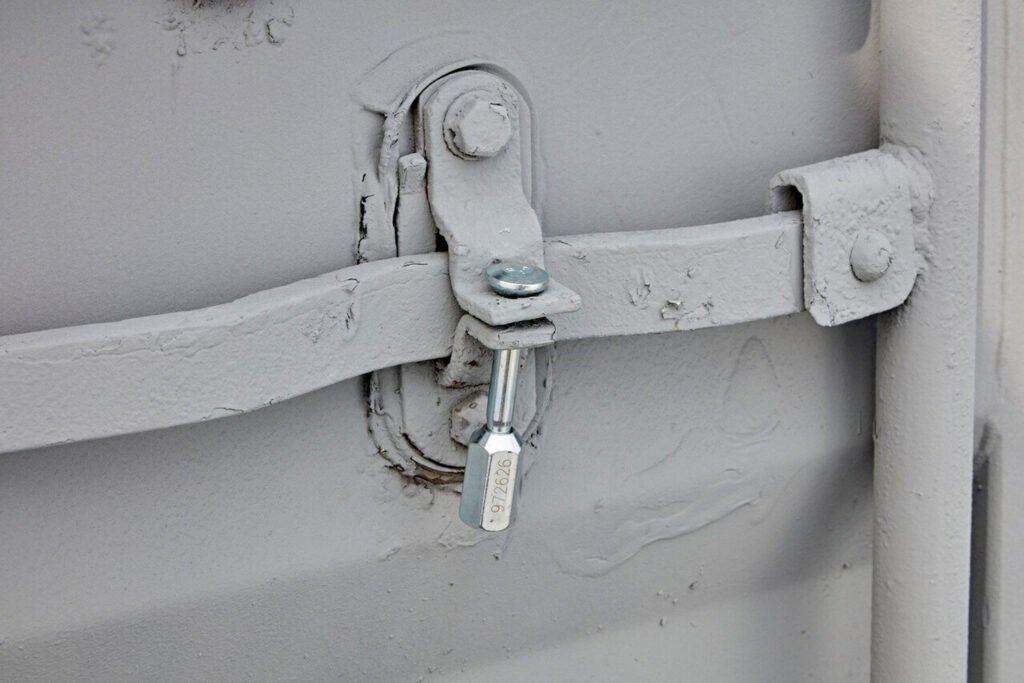
Safety is not just about your own actions; it’s about controlling the entire environment. Over the years, I've compiled a shortlist of the most hazardous, yet common, mistakes.
- Cutting Towards Your Face: This is the most dangerous error. Always turn your head away and ensure the cutters are angled so that if a piece were to fly, it would go away from you.
- Not Clearing Bystanders: Before you cut, do a quick visual scan. Loudly announce "Cutting seal!" to alert anyone nearby. Establish a "safety halo" of at least 10 feet around you where no one else should stand.
- Using Damaged or Undersized Cutters: Dull or damaged bolt cutter jaws require more force, which can lead to slipping and uncontrolled breaks. Similarly, using cutters that are too small for the job can lead to a dangerous struggle. If you have to strain excessively, your tool is wrong.
- Cutting a Loose Seal: Never try to cut a seal that is dangling or unsupported. If the seal isn't secured by the container hasp, use locking pliers to hold it steady before you attempt the cut.
Post-Removal Protocol: Securing and Documenting the Removed Seal?
The seal is off, so the job is done, right? Not yet. Leaving the pieces on the ground creates a new hazard and breaks the chain of custody for the shipment.
A proper post-removal protocol requires both pieces of the cut seal to be collected immediately. Their serial numbers should be visually re-verified against the manifest before they are securely disposed of.
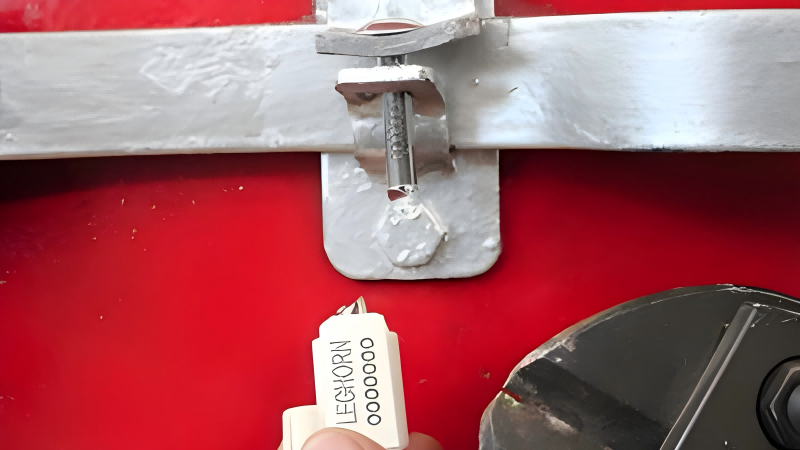
The final step of the seal's lifecycle is just as important as the first. This is the last chance to confirm the integrity of the shipment. Neglecting this step can undermine the entire supply chain security process.
Secure the Evidence
Immediately pick up both pieces of the cut seal—the pin and the barrel. The sharp edges are a hazard if left on the floor. More importantly, these two pieces are proof that the original seal was present upon arrival.
Verify and Document
Place both pieces together and perform a final check of the serial number against the bill of lading or shipping manifest. This final verification is a critical part of your security protocol. The person who removes the seal should be the one to sign off on the documentation, confirming the number matches. This creates a clear and defensible audit trail.
Proper Disposal
Do not just throw the seal pieces in a general trash can. Many companies have specific procedures for disposing of high-security seals to prevent them from being collected and potentially cloned or tampered with. Often, this means placing them in a designated, secure scrap metal bin.
Conclusion
Treating bolt seal removal as a skilled procedure, not brute force, is the key to safety. Use the right PPE and tools, follow a clear technique, and complete the documentation protocol.
Build a Complete Security Process with ProtegoSeal
A secure shipping process doesn't end with applying a strong seal; it includes its safe and documented removal. At ProtegoSeal, we design seals with both high security and controlled failure in mind. Contact us to ensure every step of your security chain is safe and effective.

